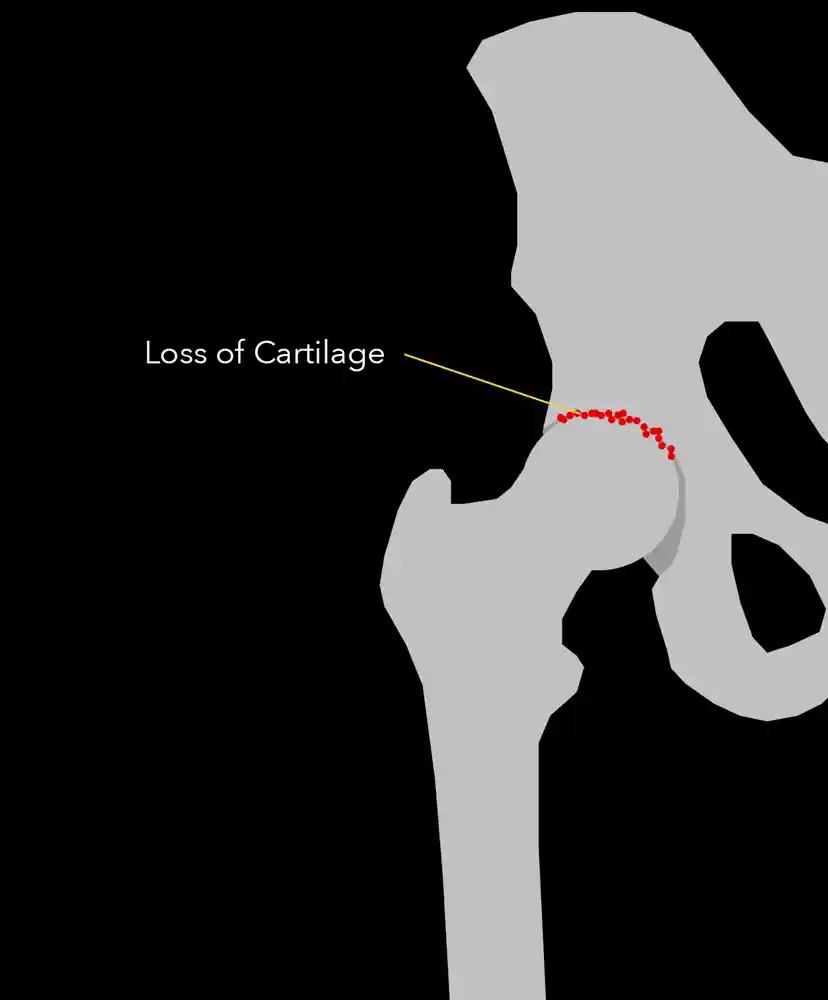
Arthritis is a degenerative disease that results in loss of cartilage, or cushion surrounding the ends of the bones. This condition is usually from overuse, or wear and tear over time. It is also known as osteoarthritis (OA), or degenerative joint disease.
Symptoms of Hip Arthritis
Pain: Commonly felt in the groin, or front pocket. May radiate down the thigh to the knee, but typically does not radiate past the knee.
Decreased mobility: Pain is typically increased with weight bearing activities such as rising from a chair, or walking. You may have a limp due to increased pain, that is improved with using an assistive device such as a cane in the opposite hand.
Limited hip motion: Degeneration of the hip joint can lead to limited range of motion. This can cause difficulty putting on shoes and socks, and lifting the leg to get in and out of a car.
Diagnosis
An x-ray is typically used to diagnose osteoarthritis. The x-ray will show narrowing of the joint space between the femoral head (ball) and the acetabulum (socket). It may also show bone spurs and other signs of degeneration.
A physical examination from an orthopedic specialist or primary care provider can also aid in the diagnosis of arthritis.
Treatment Options
Non-surgical
It is recommended that you initially treat hip pain caused by arthritis with non-operative interventions. Here are some of the non-operative treatments options:
- Activity modification
- Weight loss through diet and exercise
- Use of an assistive device (i.e cane, walker) to off-load the lower extremity
- Physical therapy to strengthen the surrounding hip musculature
- Medications such as Tylenol or NSAIDs (non-steroidal anti-inflammatories)
- Hip injection
Surgical
If non-surgical options are no longer beneficial, hip replacement may be an option to treat hip pain causes by arthritis.
Hip Pain Hip Replacement